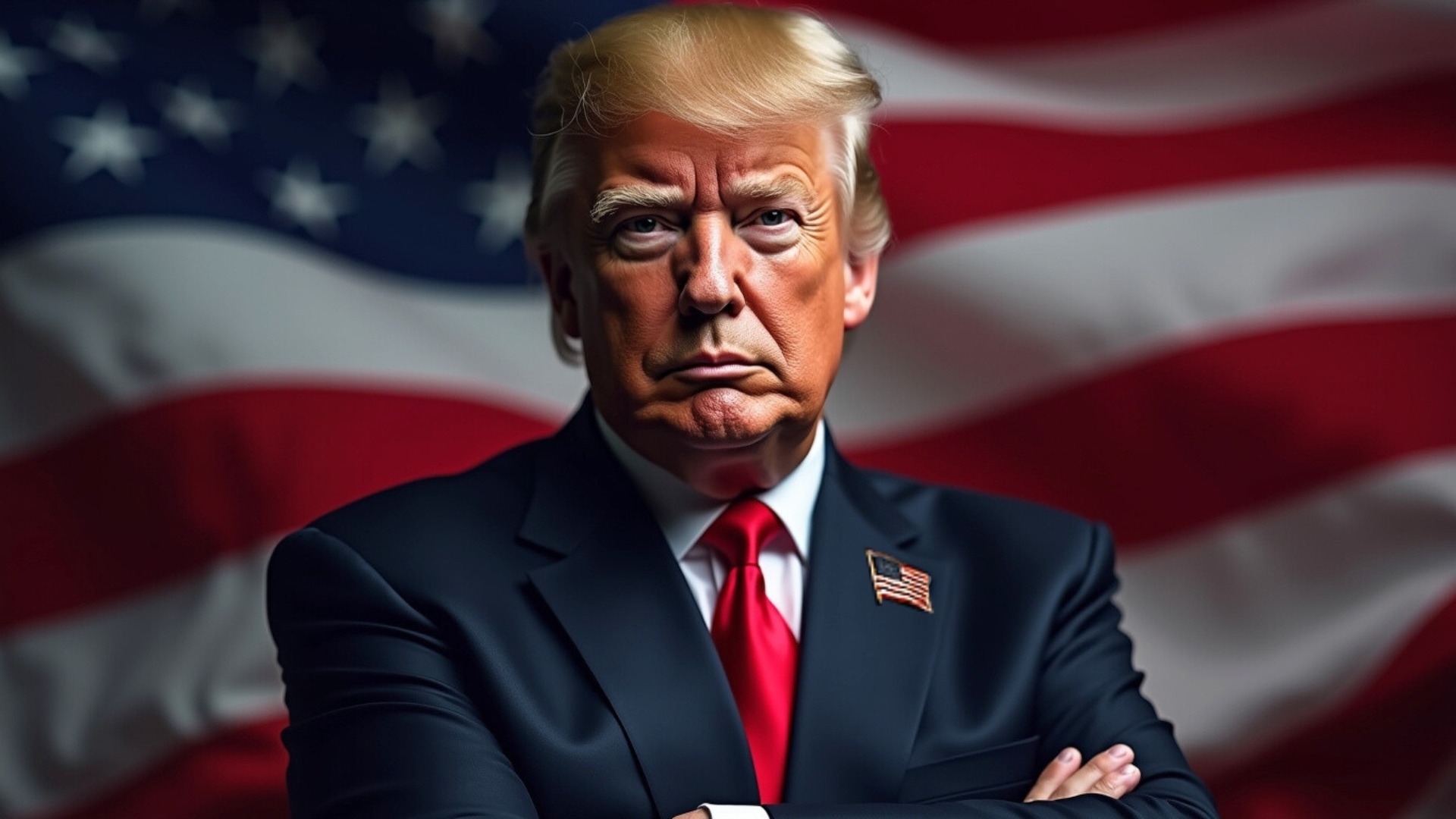Despite the claims of MAGA Prez TRump doesn’t understand the abcd of Americanism (ii)- If Prez Trump is not able to
Religious Dress: Right vs Responsibility. By Truva Diyel

Once, somebody asked a monk: “Sir, you keep telling us that what really matters is not how we look from the outside, but, rather, how we actually are inside. Why, then, are you so particular about wearing your monk’s cloak? Why do you not dress like other men?”
The monk replied: “It is true that what actually matters is how our inner being looks. My cloak has no special value in itself. I wear it only to prevent myself from going astray. Each time I am tempted to do or say something wrong, my cloak holds me back. One look at it and it reminds me that this is not becoming of a monk. In this way, it disciplines me to stay on the right path.”
Among several religious communities there are rules and practices about members’ physical appearances so that they appear distinct from others. In some cases, these practices are considered to be binding on all members of a community, while in other cases, they are limited only to a particular section of it, such as priests, mendicants or women. Such practices can take the form of rules about women wearing a particular sort of dress or men wearing a particular sort of head-gear or designing their facial hair in a particular sort of way. They could also take the form of donning special insignia that indicate membership in a particular community. No matter what form they take, these practices serve to visibly identify and set apart people of one faith community from others. They are powerful markers of religious identity.
There can be differences of opinion about the merit of such visible emblems of separate religious identity, especially in a religiously plural society. As long as they abide by commonly-accepted standards of decency, one would think that, generally speaking, people should be able to appear as they wish in the public sphere. Few would deny that those who think that their religion requires them to dress in a certain way do have the right to do so, provided it does not infringe on human rights or violate commonly-held moral standards.
Problems, however, often arise when some people take the visible markers of identity that they think are an integral and indispensable part of their religion as an end in themselves, thereby turning them into a fetish or idol. When this happens, the spirit behind the practice is lost. Instead of the practice serving to promote humility or a spirit of service, as it may originally have been intended to, it may simply be reduced to a means to distance oneself from people of other faiths and thereby fortify a misplaced sense of communal supremacy.
In recent years, there have been heated controversies in many parts of the world pitting certain religious groups who insist on what they regard as the right of their members to wear or display certain distinct markers of identity against others. These groups regard laws that aim to restrict such practices as a violation of their fundamental rights.
The debate as to whether or not such laws do constitute a violation of human rights still continues. A key fact that is often forgotten by some people who are critical of such laws is that rights always come along with responsibilities. If, for instance, members of a particular religious community insist that it is their right to dress in a particular way, they must also remember that in dressing that way and thereby visibly standing out from others they are assuming a major responsibility—with regard to their own religion and community. Because of the distinct dress that they insist on, when they appear in the public sphere they are at once associated by others with a particular religion. This would not have been the case had they not insisted on appearing different from others. Their appearance marks them as far as others are concerned as representatives of a particular faith. And that brings with it a major responsibility for them to shoulder.
Being immediately identified as members of a certain religion because of their distinctive appearance, the behaviour of these people will come to be linked by others to the religion that they claim to follow. By insisting on dressing in a certain way which they say is mandated by their religion and which they claim to be a fundamental right, these people take on a massive fundamental duty or responsibility—of maintaining a good image of their religion in the eyes of others. Often, however, such people are completely unaware of this side of the bargain.
If a person who is dressed in a particular way that marks him or her out as a follower of a particular religion does something good, it would automatically work to create a favourable image of that religion and its adherents in the eyes of people of other faiths. On the other hand, if the same person does something unseemly or behaves in an unbecoming way, even if it is just pushing one’s way through in a crowded bus or speaking a bit too loudly on a mobile phone in public, it might easily tarnish the image of his or her religion among others, who might attribute his action not just to him alone but to his religion and religious community as well.
It is no use arguing that this should not happen and that others must distinguish this individual from his religion and not judge the latter by the actions of the former. In the real world, things do not always follow the rules of logic and rationality. It is very likely that many people will associate the negative action of a person whose physical appearance very clearly announces him or her to be a member of a particular religious community with his or her religion, thereby further reinforcing negative stereotypes about this religion and its adherents.
Making sure that this does not happen is a major responsibility that people who insist on a distinctive ‘religious appearance’ must shoulder. For this, they must be extra conscious of their behaviour, making sure that they do nothing that might give their religion a bad name. People who claim that dressing in a particular way is a fundamental right should remember that doing so also means taking on the very sensitive and demanding fundamental responsibility—of maintaining a good image of their religion and community in the eyes of others. Such people must be constantly careful of their own behaviour, aware that every action of theirs, good or bad, is bound to impact on the image that other people have of their religion simply because through their distinctive appearance they come to be seen, in some sense, as representing or reflecting it.
As the monk in the above-mentioned story would say, if a distinctive ‘religious’ dress helps one to stay on the right path each time one may be tempted to stray, it is useful or skilful means. But if turns into a fetish, made into an end in itself and simply a marker of identity to distinguish oneself from others, then it has completely lost its purpose.
The monk replied: “It is true that what actually matters is how our inner being looks. My cloak has no special value in itself. I wear it only to prevent myself from going astray. Each time I am tempted to do or say something wrong, my cloak holds me back. One look at it and it reminds me that this is not becoming of a monk. In this way, it disciplines me to stay on the right path.”
Among several religious communities there are rules and practices about members’ physical appearances so that they appear distinct from others. In some cases, these practices are considered to be binding on all members of a community, while in other cases, they are limited only to a particular section of it, such as priests, mendicants or women. Such practices can take the form of rules about women wearing a particular sort of dress or men wearing a particular sort of head-gear or designing their facial hair in a particular sort of way. They could also take the form of donning special insignia that indicate membership in a particular community. No matter what form they take, these practices serve to visibly identify and set apart people of one faith community from others. They are powerful markers of religious identity.
There can be differences of opinion about the merit of such visible emblems of separate religious identity, especially in a religiously plural society. As long as they abide by commonly-accepted standards of decency, one would think that, generally speaking, people should be able to appear as they wish in the public sphere. Few would deny that those who think that their religion requires them to dress in a certain way do have the right to do so, provided it does not infringe on human rights or violate commonly-held moral standards.
Problems, however, often arise when some people take the visible markers of identity that they think are an integral and indispensable part of their religion as an end in themselves, thereby turning them into a fetish or idol. When this happens, the spirit behind the practice is lost. Instead of the practice serving to promote humility or a spirit of service, as it may originally have been intended to, it may simply be reduced to a means to distance oneself from people of other faiths and thereby fortify a misplaced sense of communal supremacy.
In recent years, there have been heated controversies in many parts of the world pitting certain religious groups who insist on what they regard as the right of their members to wear or display certain distinct markers of identity against others. These groups regard laws that aim to restrict such practices as a violation of their fundamental rights.
The debate as to whether or not such laws do constitute a violation of human rights still continues. A key fact that is often forgotten by some people who are critical of such laws is that rights always come along with responsibilities. If, for instance, members of a particular religious community insist that it is their right to dress in a particular way, they must also remember that in dressing that way and thereby visibly standing out from others they are assuming a major responsibility—with regard to their own religion and community. Because of the distinct dress that they insist on, when they appear in the public sphere they are at once associated by others with a particular religion. This would not have been the case had they not insisted on appearing different from others. Their appearance marks them as far as others are concerned as representatives of a particular faith. And that brings with it a major responsibility for them to shoulder.
Being immediately identified as members of a certain religion because of their distinctive appearance, the behaviour of these people will come to be linked by others to the religion that they claim to follow. By insisting on dressing in a certain way which they say is mandated by their religion and which they claim to be a fundamental right, these people take on a massive fundamental duty or responsibility—of maintaining a good image of their religion in the eyes of others. Often, however, such people are completely unaware of this side of the bargain.
If a person who is dressed in a particular way that marks him or her out as a follower of a particular religion does something good, it would automatically work to create a favourable image of that religion and its adherents in the eyes of people of other faiths. On the other hand, if the same person does something unseemly or behaves in an unbecoming way, even if it is just pushing one’s way through in a crowded bus or speaking a bit too loudly on a mobile phone in public, it might easily tarnish the image of his or her religion among others, who might attribute his action not just to him alone but to his religion and religious community as well.
It is no use arguing that this should not happen and that others must distinguish this individual from his religion and not judge the latter by the actions of the former. In the real world, things do not always follow the rules of logic and rationality. It is very likely that many people will associate the negative action of a person whose physical appearance very clearly announces him or her to be a member of a particular religious community with his or her religion, thereby further reinforcing negative stereotypes about this religion and its adherents.
Making sure that this does not happen is a major responsibility that people who insist on a distinctive ‘religious appearance’ must shoulder. For this, they must be extra conscious of their behaviour, making sure that they do nothing that might give their religion a bad name. People who claim that dressing in a particular way is a fundamental right should remember that doing so also means taking on the very sensitive and demanding fundamental responsibility—of maintaining a good image of their religion and community in the eyes of others. Such people must be constantly careful of their own behaviour, aware that every action of theirs, good or bad, is bound to impact on the image that other people have of their religion simply because through their distinctive appearance they come to be seen, in some sense, as representing or reflecting it.
As the monk in the above-mentioned story would say, if a distinctive ‘religious’ dress helps one to stay on the right path each time one may be tempted to stray, it is useful or skilful means. But if turns into a fetish, made into an end in itself and simply a marker of identity to distinguish oneself from others, then it has completely lost its purpose.
You May Also Like
Pakistan is an Islamic country where the majority religion is Islam while 4% percent of the population is minorities including Hindus, Sikhs,
Every year on 16 November, the world observes International Tolerance Day, established by UNESCO and the United Nations in 1995. The purpose of thi

"Trial of Pakistani Christian Nation" By Nazir S Bhatti
On demand of our readers, I have decided to release E-Book version of "Trial of Pakistani Christian Nation" on website of PCP which can also be viewed on website of Pakistan Christian Congress www.pakistanchristiancongress.org . You can read chapter wise by clicking tab on left handside of PDF format of E-Book.







